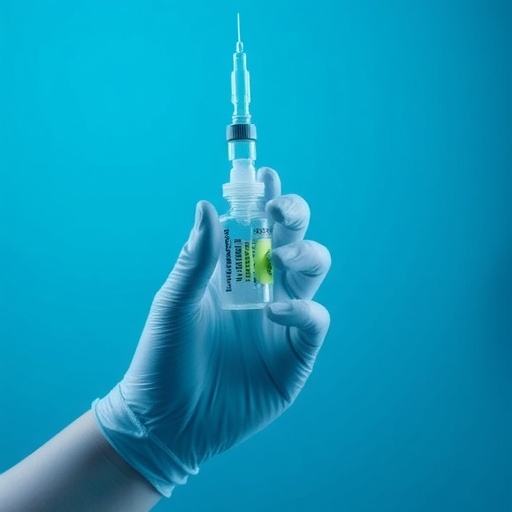There’s a reason sports leagues from the pros on down use turfgrass. It is a hearty grass that can be mowed to exceedingly short heights and tolerates trampling foot traffic with ease.

Credit: Evan Krape/University of Delaware
There’s a reason sports leagues from the pros on down use turfgrass. It is a hearty grass that can be mowed to exceedingly short heights and tolerates trampling foot traffic with ease.
But it does have a shortcoming. Turfgrass is vulnerable to a pathogen called dollar spot that is caused by the fungus Clarireedia jacksonii.
According to Erik Ervin, professor and chair in plant and soil sciences at the University of Delaware, dollar spot is the biggest disease problem on golf courses worldwide. It affects the lowest-mowed grass found on putting greens, tees and fairways, called creeping bent grass. Left unchecked, dollar spot can result in huge economic losses for golf courses and other places where turfgrass must be managed and protected.
Typical control strategies for dollar spot include regular chemical treatment with fungicides.
UD researchers Ervin, plant biologist Harsh Bais and doctoral student Charanpreet Kaur and collaborator Mike Fidanza at Pennsylvania State University are exploring more eco-friendly biological solutions to this problem. The research team recently published a paper in Biological Control J, showing that the UD-patented beneficial microbe known as UD1022 may protect turfgrass from dollar spot, offering a green alternative to complement existing turf-management processes already in use.
“This isn’t going to be a product that completely solves every problem or controls dollar spot completely,” said Ervin, an expert on turfgrass. “But it’s another part of the toolset that is biological, rather than a pesticide, to get closer to more sustainable management.”
Leveraging biologics
UD1022 is a unique strain of Bacillus subtilis, a natural, beneficial bacterium that lives on the surface of plants roots and the surrounding soil, or rhizosphere. Known as a growth promoter that can help plants flourish, UD1022 also has been demonstrated to protect plants against microscopic disease agents. It also can act as a biofungicide.
In this study, the researchers analyzed the anti-fungal capability of UD1022 and other plant health products to control dollar spot in turfgrass. They directly challenged C. jacksonii with UD1022 in laboratory experiments and found the Bacillus subtilis inhibited the fungus’ growth. Other health products used on turfgrasses, meanwhile, do not possess this antifungal capability. Further studies looking into UD1022s genetics revealed that it was UD1022s ability to form biofilms that were helpful in preventing the fungus from growing. Microbes form biofilms to either colonize hosts or as a self-protection measure against antibiotics.
Kaur, the current paper’s lead author, said this ability to prevent the fungus growth was not unexpected. Bais’ lab previously showed that UD1022’s ability to form robust biofilms is critical to the beneficial bacteria’s ability to protect plants from fungal and bacterial pathogens. And earlier this year, researchers in the Bais lab reported that UD1022 showed similar antifungal capabilities in alfalfa.
More work is needed, of course, to understand exactly what is happening and why, but it is a promising finding. Next steps in this process include exploring whether it is possible to make turfgrass associate with UD1022.
“We’ve done bacterial interactions between dollar spot and UD1022. Now we want to involve the plants,” said Kaur.
This involves taking a microscopic look at whether UD1022 bacteria exposed to turfgrass take up residence on the plant’s roots and, if so, whether this association can be leveraged to turn on specific genes to protect plant health when exposed to a potential pathogen in the field. If the researchers determine that UD1022 will willingly colonize turfgrass plants, Bais also is curious whether this will automatically trigger systemic resistance to dollar spot?
“If so, theoretically, this would allow us to change the plant’s metabolic properties, priming the plant for resistance for dollar spot, much like people get flu shots to prime our immune systems against influenza,” said Bais.
Journal
Biological Control
DOI
10.1016/j.biocontrol.2023.105284




